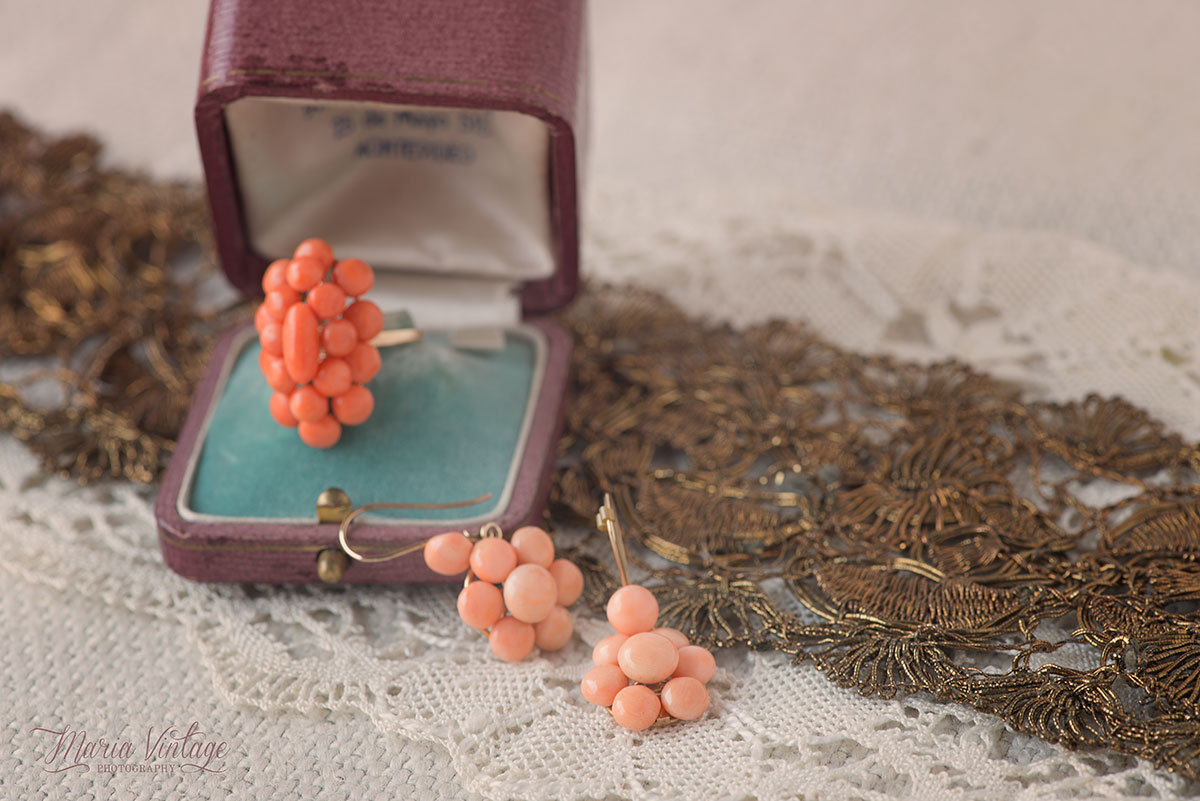My Vintage Dictionary:
Coral: According to the Dictionary, “corals are formed by small animals, the polyps of the phylum Cnidaria. They are marines, either on continental shelves or round oceanic islands. They live in colonies divided by red or rosy limestone.
However, today I would like to focus on the Corallium Nobile coral which is the specimen that master jewellers have been using over the History, the most exclusive and precious coral out of the kind. The development of these sorts of colonies is extremely slow; it grows an average of 2 – 5 millimetres a year. If you take also into account that the collection is nowadays restricted you’ll understand why this material is so expensive.
This precious coral is gathered manually and only the bigger sticks will be used for jewellery purposes, although still they’ll have to let them grow even more. In order to fish it, professionals must go down as deep as 150 metres in some cases.
Nobile Coral is usually red with shades in dark red. It rarely appears in a pale pink. The one called Angel Skin Coral is the most precious amongst them and also, very special. The word “coral” is used as well to name this entire colour range.
Coral jewels have been found in ancient Egyptian and prehistoric burials. Plinio left written that the Gallic population already used it to adorn their weapons. Also romans loved to wear their kids with a collar made with coral to preserve them from any danger. They thought it had curative attributes against snake or scorpion bites. The belief of coral as an amulet actually went on through the entire Middle Age up to the beginning of the 20th Century. Nowadays Italians keep using it against the bad luck or evil eye. Women also wear it to beat the infertility.
It’s precisely there, in Italy where you’ll find the cradle of the coral craftsmanship, exactly in Torre del Greco, a little town that still today keeps the same tradition over the centuries, even after nine Vesuvius eruptions.
Due to its softness and opacity, coral is either cut in cabochon or used to make beads.
How to care for coral:
- The only way to clean it at home is to rub it very gently with a cotton cloth either dry or a bit wet. In order to make it more shining you can use neutral soaps and wash it up straight away. Also dry it carefully.
- In case the coral missed its bright you only will be able to take it to professionals to make it shine as usual.
Let me finish with a collection of photos about jewels made with nobilis coral: earrings, rings, cufflinks and combs. As you can see this precious material can be used to make a huge variety of jewellery work… Don’t miss how many sublime tones Nature gives us.

